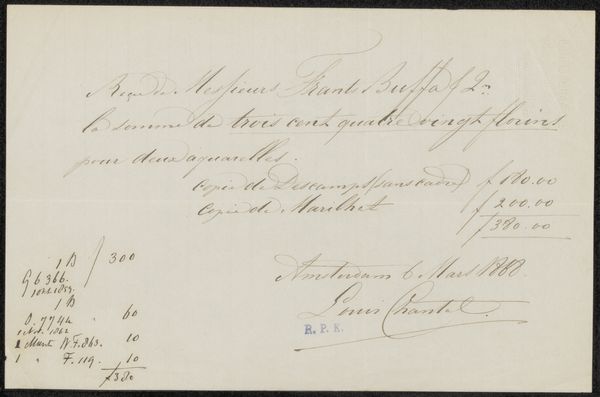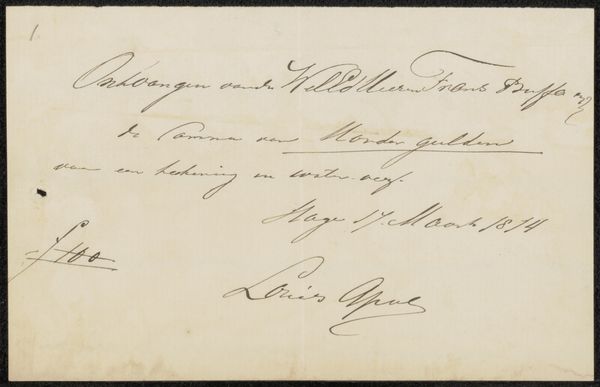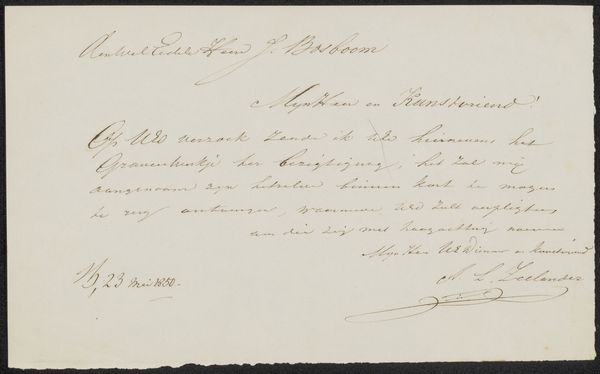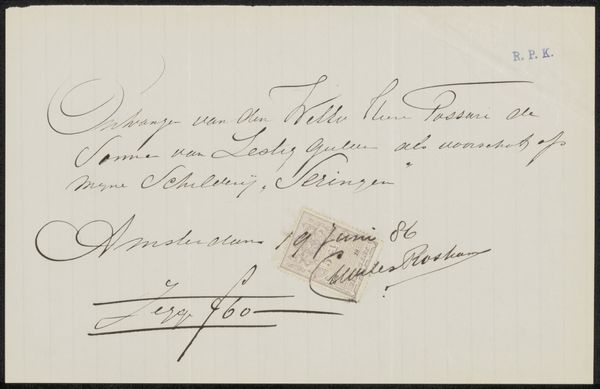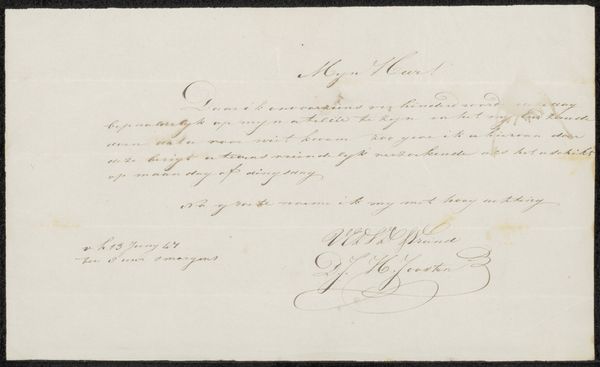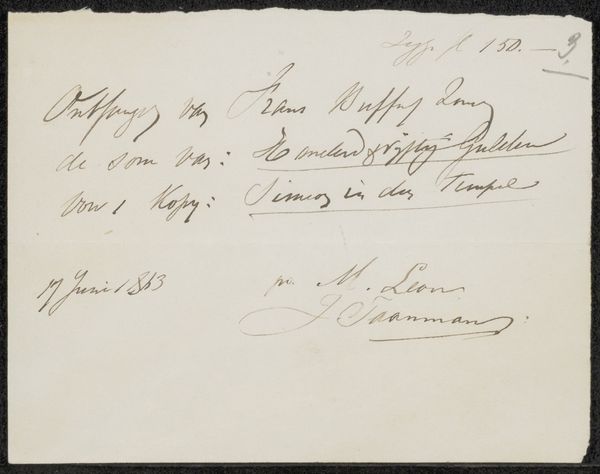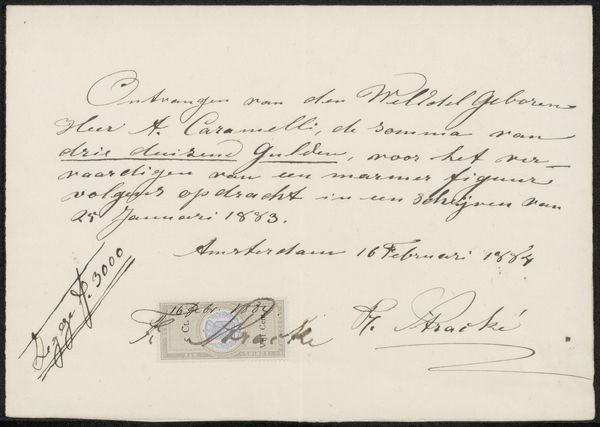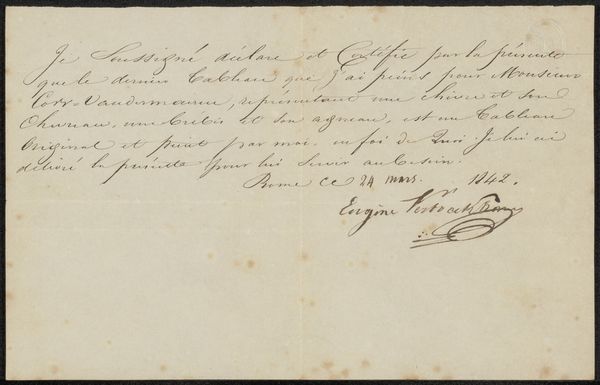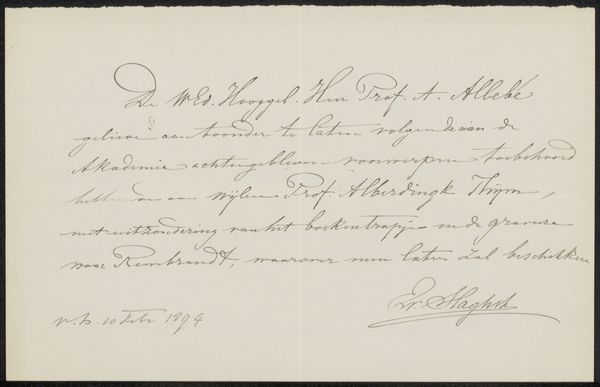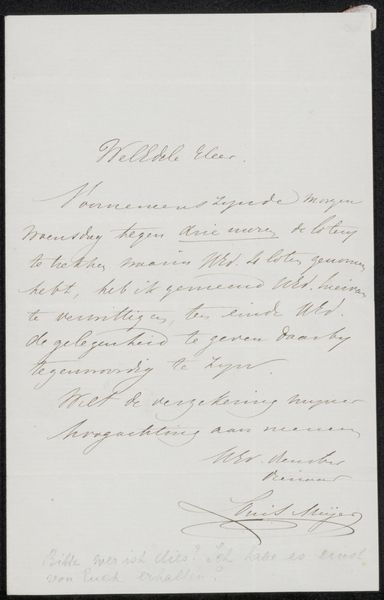
Kwitantie voor Frans Buffa en Zonen Possibly 1881 - 1882
0:00
0:00
drawing, paper, ink, pen
#
drawing
#
hand-lettering
#
hand drawn type
#
hand lettering
#
paper
#
personal sketchbook
#
ink
#
hand-drawn typeface
#
ink drawing experimentation
#
pen-ink sketch
#
pen work
#
sketchbook drawing
#
pen
#
sketchbook art
#
calligraphy
Copyright: Rijks Museum: Open Domain
Editor: So, this is "Kwitantie voor Frans Buffa en Zonen," which roughly translates to "Receipt for Frans Buffa and Sons." It's a drawing, probably from 1881 or 1882, by Christiaan Lodewijk van Kesteren. It’s simple, just pen and ink on paper, but there’s something very elegant and practiced about the penmanship. It's just a receipt, but there is real finesse in it! What do you see in this work? Curator: Well, beyond the calligraphic flourish – and isn’t it marvelous how even mundane financial transactions could be elevated by beautiful handwriting then? – I see a connection to a world increasingly fascinated by the reproducibility of images and documents. The very act of creating a unique receipt, with such care, feels like a gentle act of rebellion against that, doesn't it? Editor: That's an interesting point – a rebellion! I hadn't considered that. So you think the artist was consciously pushing back against new technologies, even in something as small as a receipt? Curator: Perhaps not consciously! Maybe it's more of an intuitive thing. Van Kesteren was, after all, an artist who clearly took pleasure in the physical act of creation. What's the emotional tenor of calligraphy if not "slowness?" Each stroke is a decision, a miniature performance, almost a kind of meditation... isn’t it beautiful to imagine someone taking such care with what seems like an utterly pedestrian task today? Editor: It really is. I usually think of art as existing purely in the realm of fine art and artistry. But seeing how it can subtly seep into everyday life, even receipts, makes me rethink what art can be. Curator: Absolutely! And, what seemed once just an ephemeral scrap of paper has acquired the immortality of art. What stories it could tell us, were we only fluent in its cursive whisper!
Comments
No comments
Be the first to comment and join the conversation on the ultimate creative platform.
